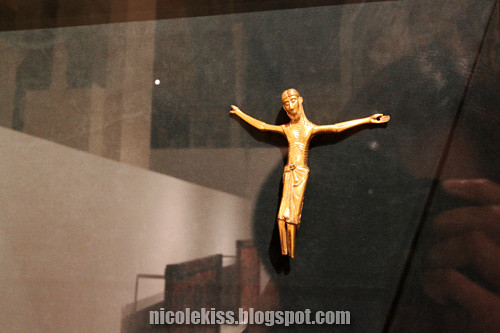Tuesday, May 31, 2011
Booking for Wynton at Ronnie's
Booking for Wynton Marsalis' dates at Ronnie Scott's (Aug 16-20) is currently open to members and will open to the public on Monday morning June 6th.
ronniescotts.co.uk
Review: Jonny Phillips' Oriole, plus Django Bates' Beloved Bird
Jonny Phillips' Oriole plus Django Bates' Beloved Bird
(Kings Place, May 29th 2011, final day of F-IRE Rhythmic Frontiers Festival. Review and photos by Roger Thomas)
The Next Generation Big Band, made up of students from the Royal Academy of Music, had started the day's proceeings, but it was the evening pincer movement with Django Bates leading the Hall One flank and Jonny Phillips' Oriole heading the Hall Two flank that gave a 'mission accomplished' feel for F-IRE's 3-day Festival.
This was less of a battle though, more like a musical Peace Corps, with Django expressing his love of Charlie 'Bird' Parker through the Beloved Bird theme and Jonny Phillips his love of all nations through all-embracing compositions tinged with the influences of Spain, South America, North Africa.
Much may have been been written about Django and his latest album - it has. Parker's music may have been been done to death - discuss. Django's interpretations, however, with his trio consisting of Swedish bass player Petter Eldh and Danish drummer Peter Bruun did give fresh and insightful perspectives into the music of the Godfather of Be-Bop. Some of the sparse intoductions by the piano and occasional subtle palm-work by Bruun across the toms offered playful moments - you're trying to guess exactly which part of Bird is about to take flight. But it would only take a slight innuendo from Petter Eldh's bass or from the Steinway for a smile of recognition to come across the faces of the audience as the full workings of Django's arrangement were revealed.
In 'Star Eyes,' a particular favourite of mine, the rhythmic interplay nicely pulsated by Eldh's bass created an atmosphere almost like that of a school playground game of tag which at those moments of release where you could imagine yourself making a dash for it and the band fully swinging I found myself forced to gleefully to sing the melody. Successively, each song continued to draw out introspection, excitement and surprise.
At one point when Django came to the microphone to introduce the trio, with set list in hand (and tongue in cheek) he said that he would be leaving the set list on the stage at the end of the show for anyone who wish to know the names of the songs to come up and look. For the more avid Bird devotees in the audience I'm sure they wouldn't find it necessary as the treatment of each of each song by Django and the band was lovingly crafted so no matter how far out an arrangement would be taken the essense was always there and in some cases I could imagine the original 78rmp or vinyl record of the song playing in the background perhaps it was just me but what was clear was the fact that the audience was also loving the performance because at the end of the show they wasted no time in stomping up an encore.
Meanwhile across in Hall Two Jonny Phillips' Oriole was also giving up the love. The love of all things experienced from far flung places. You could almost class Jonny as a vulture of different cultures, a man who seems to feed off exoticism and see nothing idle about sitting on a beach in Cadiz to catch whatever influences might be blowing in the wind. Which is exactly what was the inspiration for the opening composition Levente which is described as a wind that blows from North Morocco across the Mediterranean to southern Spain.
Cellist Ben Davis started the wind with some evocative lines gathering pace from from the arpeggiated subtleties of Nick Ramm on piano joined by some light drum work of Bosco de Oliveria and percussive sounds of Barak Schmool. The wind had left the North African shores and was in full sail by the time the whole ensemble of Ruth Goller - bass, Idris Rahman - sax and Jonny on guitar were now blending all the elements of the regions travelled.
The evening was dedicated to performing the entire works of the new album currently being finished off. The compositions are light and refreshing taking you to places of serenity as well as joyous celebration.
Originally to be titled 'Mementos' Jonny stated that he has decided to change the name of the album saying although it is in part a celebration of moments and people that have past he didn't feel comfortable with a backward looking sentiment. "All those moments were spontaneous and people forward thinking. When i sat and listened to the finished recording it made me remember that each tune was born from the excitement of living 'Every New Day'"
Jonny went on to say "I'm very proud of the recording and my band and can't wait to share it with people", to which I'm sure there are lots of us out there for whom the wait until September - when 'Every New Day' is scheduled to be released - will feel like a long one.
In the meanwhile I hope that F-IRE keeps burning bright.
Review: Stewart Lee - works by John Cage
Stewart Lee, Steve Beresford, Tania Chen, Harry Hill and Alan Tomlinson perform John Cage
(Purcell Room on Saturday 29 May, 2011; review and drawings* by Geoff Winston
Stewart Lee, best known as a comedian, has championed radical guitarist Derek Bailey on Radio 4's ‘The Music Group’ ("that music ... it stops time"). Last year he won Celebrity Mastermind with Bailey as his subject. So when he invited Beresford, Chen and Tomlnson to perform Cage's Indeterminacy and other pieces at the Purcell Room, it seemed the perfect opportunity to make a Cage Day of it.
The day started with a trip to Bexhill-on-Sea's modernist De La Warr Pavilion to see the exhibition of Cage's sublime and understated art works, ‘Every Day is a Good Day’. The show includes a wonderful film of Cage’s performance of 'Water Walk' on American TV, which was the template for its re-enactment by Harry Hill in the evening's concert.
Humour was an integral part of the proceedings. Cage is known primarily for his re-evaluation of the concepts of musical composition and performance, but his questioning and his general outlook were accompanied by a grace and a gentle wit, which are easily overlooked.
In the opening exploratory duet Beresford's delicate, richly nuanced piano was the foil to Alan Tomlinson's mobile, expressive vitality; breaths were drawn through the trombone mouthpiece before exploding into a raucous elephantine bellow.
Tania Chen, a seasoned interpreter of Cage, opened her solo improvisation on prepared piano (Cage's invention, born of necessity in 1940), adding a mild, percussive rattle. In an expressive, tempered sequence, she leaned to pick out notes on the piano strings; mellow then turned jumpy, and she closed with a fevered burst.
Tomlinson's inspired interpretation of Cage's 'Solo for Sliding Trombone' (of which he asked, not unreasonably, "What is a sliding trombone?") drew on the traditions of vaudeville. Dressed in black tights, cream jacket, bow tie and a red cummerbund, Tomlinson re-enacted Chisholm's solo from the Goons' 'Ying Tong Song' and, in explaining Cage's open-ended instructions to the performer - tongue-in-cheek bordering on disbelief - he mentioned that Cage sought guidance from a trombonist who had played with Spike Jones. Tomlinson's virtuosic display included the dismantling of his instrument, as he followed his selected path through the score. As he nodded the beats, there were blurted single notes, and the application of various mutes and found objects, including a metal pie plate which vibrated unnervingly, and a plastic cup which bounced around inside the bell. He blew into the bell, and a laughing trombone ended up as amplified, liquid gargles played only on the main slide.
Difficult to follow, but what better than a respectful and accurate rendering of Cage’s ‘Water Walk’? Harry Hill navigated his way through the self-timed 3 minute obstacle course of mainly water-related equipment - a bath, a hissing pressure cooker, a squeaky rubber duck, a food processor filled with ice, a watering can, a vase of flowers, a glass and a bottle of Campari - to name just a few - along with a piano and a bank of mute radios, producing a sequence of events and sounds, which, through precision and serendipity, avoided a descent into slapstick.
The main event was the trio of Stewart Lee, reciting 40 of Cage's one-minute stories (there are 200 to choose from), to the dissociated accompaniment of Beresford and Chen on a variety of implements and instruments. The stories, drawn by Cage from his personal experience and his reading, are succinctly set out and each makes a point, often with a philosophical resonance. Lee read these with the awkward, gappy pacing that Cage instructed, speeding up or spreading out to fit their 60 second allocations. The musicians worked in tandem, independently of Lee, as Cage deemed, creating a soundtrack to the spoken text, with odd juxtapositions and unconventional instrumentation, slipping from drama to whimsy, and pianissimo to forte, which briefly drowned out a few words. Beresford created wind chimes from the piano wires; Chen used maracas, a rattle, wind-up toys, a small whistle and finally blew up and squeaked the membrane of a red balloon. Once the humour had evaporated a calm thoughtfulness remained, echoed in the subtext of one anecdote in which the Zen master, Dr Suzuki said that after studying Zen "... the feet are a little bit off the ground." The audience left with a mild hover in our collective step.
Haul from Hong Kong and HK Disneyland
So I got back from Disneyland over the weekend staying at the spectacular Hollywood hotel. Will be blogging about it soon.
Here are the things I bought from my weekend in HK and HKDL (stands for Hong Kong DisneyLand).

I didn't expect I would buy so many!
Things in Hong Kong are so cheap! Max *heart*!
Here's a breakdown of my haul.

Four H&M dresses - two maxi dresses, one babydoll and one beach dress.
Have I mentioned how much I just adore H&M already?
Got a Biotherm Cleanser at RM56 ringgit. CHEAP! Though I have a full bottle but there's nothing wrong with stocking up one more since I do use the product. They're selling it here for RM80? RM90?
The sales lady at Sasa also convinced me to buy this Suisse Programme from Switzerland eye gel cream. It's for hydration and anti-wrinkle and comes at a steep price of RM150, should be even more expensive here in Malaysia.

I heard a lot about Suisse but never used them before. Anyone can give some feedback on this brand?
Some Hong Kong friends I met told me they've stopped using Japan products because of the radiation, so I'm considering switching to European brand right after finishing my SK-II and Hada Labo.
Bought a Mickey magic hat that lights at night. lol.
And a Minnie sun-cap. I *heart* Minnie, more than any of the princess characters to be honest.
Some Disneyland keychains.

They're so cute! Comes at RM24 - RM40 per set.
I got for myself.

And this for my bestie Wendy.

From HKDL I also bought this uber cute Chip & Dale umbrella.


two sides.
It's a tiny umbrella that can only fit one person in it, I think it's actually made for children. But who cares, I like it.
Popteen magazine. *love*

A coca-cola can for Wendy again to add to her mountaneous collection of coca-cola drinks all over the world through the time.

I should blog about that one day.
Two boxes of Wing Wah's famous wife cakes. Yum.
I think I blogged about these biscuits/cakes before.
Another reason to love Hong Kong.
And lastly,
My Dear Diary Masks.

They're so cheap there!
And they're even cheaper in Taiwan.
I got two big boxes with 34 masks inside, and one small box with 10 masks inside. If I use it twice a week, this supply can last me for 10 months~! Muahahaha!
The big box sells for RM60 in HK, whereas they're selling for RM128 in Guardian, Malaysia.
Imagine that, an average of RM1.80 per piece! CHEAP!
Total damage: I rather not calculate. La~la~la~
Remember my Judith Leiber sunnies I bought?
Well I promised to post a photo of me wearing it, so here it is.

Ta-da!
Nice or not, nice or not, nice or not? Tell me nice else don't say anything.
Muaks!
Here are the things I bought from my weekend in HK and HKDL (stands for Hong Kong DisneyLand).

I didn't expect I would buy so many!
Things in Hong Kong are so cheap! Max *heart*!
Here's a breakdown of my haul.

Four H&M dresses - two maxi dresses, one babydoll and one beach dress.
Have I mentioned how much I just adore H&M already?
Got a Biotherm Cleanser at RM56 ringgit. CHEAP! Though I have a full bottle but there's nothing wrong with stocking up one more since I do use the product. They're selling it here for RM80? RM90?
The sales lady at Sasa also convinced me to buy this Suisse Programme from Switzerland eye gel cream. It's for hydration and anti-wrinkle and comes at a steep price of RM150, should be even more expensive here in Malaysia.

I heard a lot about Suisse but never used them before. Anyone can give some feedback on this brand?
Some Hong Kong friends I met told me they've stopped using Japan products because of the radiation, so I'm considering switching to European brand right after finishing my SK-II and Hada Labo.
Bought a Mickey magic hat that lights at night. lol.
And a Minnie sun-cap. I *heart* Minnie, more than any of the princess characters to be honest.
Some Disneyland keychains.

They're so cute! Comes at RM24 - RM40 per set.
I got for myself.

And this for my bestie Wendy.

From HKDL I also bought this uber cute Chip & Dale umbrella.


two sides.
It's a tiny umbrella that can only fit one person in it, I think it's actually made for children. But who cares, I like it.
Popteen magazine. *love*

A coca-cola can for Wendy again to add to her mountaneous collection of coca-cola drinks all over the world through the time.

I should blog about that one day.
Two boxes of Wing Wah's famous wife cakes. Yum.
I think I blogged about these biscuits/cakes before.
Another reason to love Hong Kong.
And lastly,
My Dear Diary Masks.

They're so cheap there!
And they're even cheaper in Taiwan.
I got two big boxes with 34 masks inside, and one small box with 10 masks inside. If I use it twice a week, this supply can last me for 10 months~! Muahahaha!
The big box sells for RM60 in HK, whereas they're selling for RM128 in Guardian, Malaysia.
Imagine that, an average of RM1.80 per piece! CHEAP!
Total damage: I rather not calculate. La~la~la~
Remember my Judith Leiber sunnies I bought?
Well I promised to post a photo of me wearing it, so here it is.

Ta-da!
Nice or not, nice or not, nice or not? Tell me nice else don't say anything.
Muaks!
Could lessons in genetic variation help reduce racial prejudice?
Richard Dawkins called it "the curse of the discontinuous mind" - our tendency to lump things into discrete categories. Nowhere is this more apparent than in our perception of ethnic races, which we tend to see as reflecting absolute dividing lines in the human population. Do mistaken folk beliefs about genetics play a role in this? A new study by Jason Plaks and his team suggests so. What's more, their findings have interesting implications for an anti-prejudice intervention based around genetics lessons.
The background to this work is that people often mistakenly assume that superficial ethnic characteristics are a reliable sign of significant genetic difference. In fact, each of us is about 99.9 per cent similar genetically to the next person. And the genetic variability that does exist in the human race tends to be greater within ethnic groups than between them.
Plaks and his colleagues devised an ingenious memory test to expose the tendency of their 84 student participants to see black and white races as clear-cut categories (the students were from various ethnic backgrounds, but the majority were white). The stimuli were faces morphed from real photos of black and white people to consist of seven degrees of prototypical blackness and whiteness (including: all black, all white, 50/50, 16.67 per cent black, 16.67 per cent white, 33.33 per cent black and 33.3 per cent white).
These faces appeared in sequence on-screen interspersed with numbers. The participants' task for each number and each face was to say whether it was the same as the last seen number or face. For people who see ethnic races as distinct categories, the racial profile of the faces ought to have interfered with their memory performance. That's exactly what was found.
After the task, the participants were asked how much genetic overlap two random people on earth would be expected to have (the average answer was 56 per cent). Those participants who said there would be less overlap tended to be the same ones who were affected by the racial profile of the faces. That is, they were more likely to say mistakenly that the current face was the same as the last face, if the two faces had a similar racial profile. This suggests they were using racial cues to remember the faces. By contrast, participants who believed there is more genetic overlap between strangers tended to be unaffected by the racial profile of the faces. Presumably they used more idiosyncratic features of the faces to remember them by.
If belief in genetic variation is correlated with people's tendency to categorise faces according to race, then what if people are educated about human genetic variation - might that change their proclivity for prejudice? The next stage of the Plaks' study suggested so.
Half of 95 participants read a passage of text (adapted from a real American Psychologist article) that correctly stated the 99.9 per cent genetic overlap between random individuals, and drew an analogy between ethnic groups and social clubs. The other half of the participants read a version that said genetic overlap between individuals is low (21.4 per cent) and drew an analogy between ethnic groups and families. Again, the participants were from various ethnic backgrounds, but most were white.
Afterwards the participants had to rate words (e.g. "disgusting", "delightful") as either positive or negative as fast as they could. A crucial twist was that the words were preceded by a face prime with varying degrees of racial black or whiteness. For the participants who read the low genetic overlap text, the racial profile of the face prime made a difference - they were quicker to categorise negative words after a face that was 25 per cent black or more. By contrast, the racial profile of the face primes made no difference to the performance of the participants who read the text explaining the high genetic overlap between humans. In other words, being educated about the genetic overlap between humans seemed to reduce participants' sensitivity to, and discrete categorisation of, racial colour, thereby reducing their implicit prejudice in the word recognition task.
Plaks and his colleagues said this result suggests people's beliefs about genetic variation are malleable and could therefore be a useful target for anti-prejudice interventions. "People without a strong motivation for prejudice - and even those with professed egalitarian ideals - frequently display signs of racial stereotyping," the researchers concluded. "We suggest that people with egalitarian ideals may still exhibit stereotyping at least partly because they harbour particular assumptions about genetic variation."
_________________________________
 Plaks, J., Malahy, L., Sedlins, M., and Shoda, Y. (2011). Folk Beliefs About Human Genetic Variation Predict Discrete Versus Continuous Racial Categorization and Evaluative Bias. Social Psychological and Personality Science DOI: 10.1177/1948550611408118
Plaks, J., Malahy, L., Sedlins, M., and Shoda, Y. (2011). Folk Beliefs About Human Genetic Variation Predict Discrete Versus Continuous Racial Categorization and Evaluative Bias. Social Psychological and Personality Science DOI: 10.1177/1948550611408118
This post was written by Christian Jarrett for the BPS Research Digest.
The background to this work is that people often mistakenly assume that superficial ethnic characteristics are a reliable sign of significant genetic difference. In fact, each of us is about 99.9 per cent similar genetically to the next person. And the genetic variability that does exist in the human race tends to be greater within ethnic groups than between them.
Plaks and his colleagues devised an ingenious memory test to expose the tendency of their 84 student participants to see black and white races as clear-cut categories (the students were from various ethnic backgrounds, but the majority were white). The stimuli were faces morphed from real photos of black and white people to consist of seven degrees of prototypical blackness and whiteness (including: all black, all white, 50/50, 16.67 per cent black, 16.67 per cent white, 33.33 per cent black and 33.3 per cent white).
These faces appeared in sequence on-screen interspersed with numbers. The participants' task for each number and each face was to say whether it was the same as the last seen number or face. For people who see ethnic races as distinct categories, the racial profile of the faces ought to have interfered with their memory performance. That's exactly what was found.
After the task, the participants were asked how much genetic overlap two random people on earth would be expected to have (the average answer was 56 per cent). Those participants who said there would be less overlap tended to be the same ones who were affected by the racial profile of the faces. That is, they were more likely to say mistakenly that the current face was the same as the last face, if the two faces had a similar racial profile. This suggests they were using racial cues to remember the faces. By contrast, participants who believed there is more genetic overlap between strangers tended to be unaffected by the racial profile of the faces. Presumably they used more idiosyncratic features of the faces to remember them by.
If belief in genetic variation is correlated with people's tendency to categorise faces according to race, then what if people are educated about human genetic variation - might that change their proclivity for prejudice? The next stage of the Plaks' study suggested so.
Half of 95 participants read a passage of text (adapted from a real American Psychologist article) that correctly stated the 99.9 per cent genetic overlap between random individuals, and drew an analogy between ethnic groups and social clubs. The other half of the participants read a version that said genetic overlap between individuals is low (21.4 per cent) and drew an analogy between ethnic groups and families. Again, the participants were from various ethnic backgrounds, but most were white.
Afterwards the participants had to rate words (e.g. "disgusting", "delightful") as either positive or negative as fast as they could. A crucial twist was that the words were preceded by a face prime with varying degrees of racial black or whiteness. For the participants who read the low genetic overlap text, the racial profile of the face prime made a difference - they were quicker to categorise negative words after a face that was 25 per cent black or more. By contrast, the racial profile of the face primes made no difference to the performance of the participants who read the text explaining the high genetic overlap between humans. In other words, being educated about the genetic overlap between humans seemed to reduce participants' sensitivity to, and discrete categorisation of, racial colour, thereby reducing their implicit prejudice in the word recognition task.
Plaks and his colleagues said this result suggests people's beliefs about genetic variation are malleable and could therefore be a useful target for anti-prejudice interventions. "People without a strong motivation for prejudice - and even those with professed egalitarian ideals - frequently display signs of racial stereotyping," the researchers concluded. "We suggest that people with egalitarian ideals may still exhibit stereotyping at least partly because they harbour particular assumptions about genetic variation."
_________________________________
This post was written by Christian Jarrett for the BPS Research Digest.
Monday, May 30, 2011
Festival Round-up: European Jazz Expo 2011 in Cagliari
EUROPEAN JAZZ EXPO, PARCO MONTE CLARO, CAGLIARI, SARDINIA, MAY 26-29, 2011 (Photo credit above: Agostino Mela)
TEN HIGHLIGHTS - A PERSONAL SELECTION
- Rita Marcotulli's trio (photo below) with Gianluca Biondini and Javier Girotto, and the perfect sunset which greeted Marcotulli's Premio EJE
- Tigran Hamsayan with Jeff Ballard- Big names of Italian jazz Stefano Bollani, Stefano di Battista- Maria Pia de Vito for vocal versatility
- And an easily overlooked unsung hero: pianist Max Tempia
- And the Brits: ex-Glaswegian Nick the Nightfly, Filomena Campus Quartet, Ray Gelato - The see breeze in Cagliari, always there in the collective memory of Sardinians, and in reality
- A great gig to end: Enzo Pietropaoli Quartet- A large good-natured crowd in a city park
- At 25 Euros for 50 gigs, over four days, astonishingly good value
 |
| Rita Marcotulli. Photo credit: Agostino Mela. |
THURSDAY MAY 26th
One of the very first things which the visitor to Cagliari notices is the cooling breeze from the sea. The locals talk a lot about it. Cagliari is an historic seaport, the wind, which is an integral part of that history, made several appearances, during the festival, both welcome and unwelcome. The wind has its rights in Cagliari: afrer all, it was here first.
It made its first scheduled appearance in the title of the opening concert. "Il colore el Maestrale," was a festival commission given by guitarist/composer Mauro Palmas and an orchestra is a special re-working of material from Palmas' 2011 album. For Palmas this wind, the "Maestrale" or Mistral, originating in North Africa, is a "vehicle for memories." Palmas in his notes talks about not hiding behind the harbour wall, but allowing the wind to bring back strong recollections from a career in music. On this occasion, the music was accompanied by back-projected images. In the first movements the beauty and the colours of the landscape brought folky melodies. There were other themes invoked, such as the taming of the interior, using footage of quarrying, but the main direction of the music was to inspire emotions and a sense of place, and one Sardinian exile told me it had indeed struck a strong emotional resonance in her.
For me it was the appearance of veteran launeddas player Luigi Lai which stole the show. The launeddas is a traditional wind instrument sounding like bagpipes but reliant on human breath and on circular brathing technique. Lai is a powerfully rhythmic player, the band members were swaying and moving in rhythm, the audience cheered him to the echo. The presence of a musician like Lai typifies the fierce pride which Sardinians have for the island, its history and its folk tradition. To travel to a European jazz festival like EJE Cagliari is to witness a community showing itself at its most characterful and best.
FRIDAY MAY 27th
A lovely moment occurred in the Piccola Arena. Sardinian singer Elena Ledda and italian pianist Rita Marcotulli were being presented with their joint award the Premio EJE, the festival's main prize. I turned round and my eyes caught the evening sky. While a speaker was paying tribute to one of the guiding spirits behind the original "Jazz in Sardegna" festivals of the 1980's, Alberto Rodriguez, the sky spoke too. Perhaps the ultimate sitter-in at a jazz gig is the deep red of a perfect Cagliari sunset.
There was another connection with nature and history to be made at that moment. Sardinian sculptor Pinuccio Sciola who works with Sardinian basalt rock, has been a friend of the festivl since the early days and has made the awards given to the artist of the year every year. He once welcomed Don Cherry and Sun Ra in the early days to be his houseguests, and to show them around his "stone garden." Cherry, apparently returned the compliment and played for the sculptures and the doves. Sciola was also honoured at this concert as the "Symbolic godfather" of the festival.
I caught the first half of Ledda and Marcotulli's performance. "I silenzio delle donne" was a fesitval commission in which the pianist and singer worked with three dancers - Monica Casadei, also responsible for the choreography, Gloria Dorliguzzo and Sara Muccioli. What stays in the mind is Ledda's warm and characterful voice, Marcotulli's wonderfully supportive and piano playing, and above all a beautiful sense of structure and line in each song, which gave shape to the dancers movements, entrances and exits.
Entry to the festival was completely free on Friday, and this was the day when a colourful arrangement of childrens' play equipment received the happy attentions of crowds of youngsters. As the evening proceeded, and the teenagers came in to the park in droves, a British visitor could not fail to be impressed at how good-humoured it all was. I could see no alcohol-fuelled anger whatsoever.
 |
| Gianluca Pellerito. Photo credit: Agostino Mela. |
Another highlight of the Friday was the appearance of seventeen year-old drummer Gianluca Pellerito. Pellerito, I was told, had been brought to a Berklee jazz school audition panel in Perugia at the age of eight, and had already captured the panel's attention. He has since been remarked on by Peter Erskine, and studied with him, and goes regularly to the US. Though never outgunned musically, he looked physically slight in the company of far older players. The group led by American saxophonist Michael Rosen powered through funk-oriented versions of Chick Corea's Spain and "Take Five." Pellerito will surely in time get to discover and hang out with players of his own generation.
I also caught, briefly an energetic young Mallorcan band . The Balearic islands have historic ties to Sardinia, and to see such associations renewed through a significant Mallorcan presence at a jazz festival was a heartening sight.
As the evening progressed and darknss descended , the action moved over to the main stage, the Arena, for two shows with strong British connections:
Nick the Nightfly is an Italian phenomenon. Nick - it is his stage name - hails originally from Glasgow. Through his artistic stewardship of the Blue Note in Milan, and especially through a popular jazz show on Radio Mote Carlo, he is a highly popular figure in Italian jazz. He sang the lively self-penned songs from his 2010 album "Nice One," had a large crowd dancing and cheering enthusiastically.
 |
| Kai Hoffman and Ray Gelato. Photo credit: Marco Floris |
This crowd, mainly of teenagers, grew massively after nightfall, but the whole atmosphere was relaxed, unthreatening good-natured.
SATURDAY MAY 28th
On Saturday the wind made a brief unscheduled appearance at around 6pm. It made a serious attempt to disrupt a wonderful set from the trio of Rita Marcotulli, accordionist Gianluca Biondini and the Argentinian soprano and baritone saxophone player Javier Girotto, based around the CD "Variazioni su tema" (SARDCD 0016). To see the players also coping with high winds, yet keeping up both a feverish pace of work, and their happy conversational interplay, without ever flinching, spoke volumes about their professionalism.
I hadn't heard Biondini (photo below) before. He is a world-class player in the same league as Richard Galliano, and the miracles of stepping on tiptoe through Marcotulli's gorgeously shifting harmonies, while avoiding any clash of the two chordal instruments was joyous. Saxophonist Girotto brings expressive range to the group: there is often a rawness and a fervour on his soprano which can take the collective vibe to a different place. Or, for contrast, he has punch and assertiveness, but also warmth, on baritone. On the tune "La Vanita" he adapted his playing remarkably, to match to perfection the snatched articulation of the accordion.
 |
| Gianluca Biondino |
Marcotulli as composer has won the prestigious David di Donatella prize this year for her work on a recent film score. This trio with its summery upbeat feel and its catchy melodiousness, is ideal festival fare, should have festival bookers seeking out slots. They had the worst of the wind. Sardinian sages, I was told, were predicting that the wind would subside after nightfall. And they were right.
Earlier in the day we were able to listen to the nicely contrasting style of Norwegian pianist Helge Lien's trio. Lien achieves stillness, concentration which often stands out in relief against the busy-ness of his bassist Frode Berg. The delicacies of Lien's Bill Evansish introspection in "Hyll" risked getting lost in the setting of a park, but the sound engineers were doing a great job capturing his elegant piano touch. It was interesting on a weekend surrounded by Italian musicians who tend to produce singable, melodic, emotional material to be exposed to Lien's more cerebral and detached music.
 |
| Maria Pia de Vito. Photo credit: Agostino Mela. |
Maria Pia de Vito's set was a joy. She is fearlessly versatile, yet impeccable in everything she attempts, from a sensuous and thoroughly engaging duo ballad with piano, to fiendish bebop heads to beatboxing. Some commentators lament the limitations of the vocoder-synth, but Maria Pia de Vito used it creatively on a song with a happy poppy undercurrent similar to Jamie Cullum's --"Get Your Way." A Cullum-De Vito collaboration one day? Who knows?
The Italian audience (see top picture/ credit :Agostino Mela) on the festival's busiest day made sure that they were in their seats early for Stefano Bollani. There was standing room only, even for the soundcheck. I counted fifteen photographers capturing the action for posterity. Bollani's "Visionari" band plays extrovert confident music. The focus is on the leader. The powerful clarinet player was having to work his socks off just to get a delayed ripple of applause for solos in which he had given his all. Bollani, on the other hand, would garner immediate applause mid-solo, just for switching from Rhodes to piano. This was extrovert music, powerfully played to an enthusiastic and packed house.
I caught briefly the cheery Italian band Funk Off, who were leading a great party set. They are well-drilled, bob up and down to stand and play on cue. Sonically, those of us who think and listen low were getting a treat. Funk Off has a bass clef anchor and engine of a sousaphone and three baritone saxophones. That was the sound audible from the distance echoing through the trees as the blaring of trumpets, melted and dissipated like the ice cream sculptures feom Isola del Gelato in the Piazza Yenne.
 |
| Saturday night in the arena. Photo credit: Marco Floris |
The busiest point in the festival was the appearance of Alpha Biondy on the main arena stage. A reporter from L'Unione Sarda has already reported that the reggae star from Cote d'Ivoire turned the park into a "dancefloor sotto le stelle" (as in picture above. Anyway, the party went on afterwards at the elegant modern T-Hotel. Nick the Nightfly did a late set and was living up to his name, welcoming sitters-in up on to the stand at a lively jam session which went on into the small hours.
SUNDAY MAY 29th
 |
| Tigran Hamsayan, Photo credit : Agostino Mela. |
The first gigs of the day were at 11am. The reputation of Tigran Hamsayan, Armenian-born, a former student of Alan Pasqua in California, and now a resident of New York, precedes him. He was the winner of the Monk piano competition and has garnered a second and a third prize on subsequent appearances in the Martial Solal competition. It was an intriguing prospect to hear him in a park completely open to the public. Beyond the hedges behind the stage were Sunday morning joggers, each in his or her own headphone-enclosed world, oblivious to what was going on. There was the occasional sound of children from the swings of a nearby playground. And yet Hamsayan's musicianship and dazzling pianism held the attention completely. He justifies easily his place among the elite of young piano players. His set consisted of originals, mostly infused by the Russian-Armenian heritage, with oriental scales, He was joined for two numbers at the end of his set by master drummer Jeff Ballard - no less - on fabulous form. The closer, "Leaving Paris," a Hasayan origina,l penned when the pianist-composer was in his teens, had echoes of French chanson and Chabrier, and completely caught the mood of a Sunday morning.
5pm presented an interesting choice of unfamiliar acts. The stages being so close together, it was possible to sample a couple and to stroll on. I tried Roberta Alloisio's charmingly melodic modern folk take on seventeenth century courtly love. And the childhood memories of "goats and oats" of the original female Jamaican dub poet Jean "Binta" Breeze. But the artists who made me want to linger and listen were a duo of trumpeter Andrea Tuffanelli, a proud native of Puccini's home town of Torre Del Lago, with that kind of characterful, reliable, supportive pianist who forms the backbone of any jazz scene, Max Tempia from Biella. While Tuffanelli pleased the crowd with his lead trumpet high notes, reaching up into Maynard Ferguson territory, Tempia provided imaginative and creative support throughout. They played a medley based on Puccini arias, reinforcing the strong dual roots which in Italian jazz has in vocal music and in the localities and regions which give pride and a sense of belonging.
 |
| Stefano di Battista and Gino Castaldo, Photo credit : Agostino Mela. |
Stefano di Battista brought an all-male group to pay tribute to the legendary women of our time. There wasn't a weak link in the band. Jeff Ballard introduced "Lara Croft" with an imitation on drum kit of an arcade shoot-em-up game which will stay in the mind. Jonathan Kreisberg brought synth sophistication and earthy bluesiness to his guitar contrbutions. However, the spoken introductions by journalist Gino Castaldo were over-wordy, and testing the boundaries of relevance, like an explanation that Soviet cosmonaut Valentina Tereshkova might really have been Molly Bloom because she had been launched into orbit on Blooms Day, for example.... To me, the whole ended up as more than the sum of its parts. The crowd were getting into the energy of the performance, and di Battista is always an interesting composer.
 |
| Bill Saxton/ Charles Tolliver. Photo credit: Agostino Mela |
New York tenor player Bill Saxton had as guest the legendary trumpeter Charles Tolliver, sprightly as he approaches his seventieth year . His composition "The Ringer," a mode-shifting son of Horace Silver's "Song to My Father," and a ferociously fast Saxton original "Blues for Obama" were the highlight of the quintet's lively set.
Filomena Campus brought some of the elite rhythm section players from the London scene - Steve Lodder on piano, Dudley Phillips on bass and Winston Clifford on drums. In a well-judged set, Campus shone in the peaceful Sardinian song "No potho reposare." She rounded off the set in a lively bossa tribute to Brazilian stage director Augusto Boal, with Campus reaching up well into head-voice, and the trio hiting the groove hard.
One of the strongest performances of the festival came right at the end. A quartet led by bassist Enzo Pietropaoli, and consistig of much younger players who clearly revere him and thrive in his company were playing originals from the album Yatra (Jando Music). Drummer Alessandro Paternesi's drumming was creative and explosive. The audience seemed to make a beeline for these popular musicians.
ROUNDING UP- (1) FACTS ABOUT EUROPEAN JAZZ EXPO
"One park, four days, 50 concerts, 8 stages." These key facts about European Jazz Expo Cagliari 2011 had been neatly displayed in the advance publicity. But, digging deeper, there is quite some history here. A jazz festival has taken place in Sardinia's capital since 1980, and the European Jazz Expo since 2004. This year the organizers have been able for the first time to move the festival and Expo from the Fiera or trade fair area on the city's outskirts, into the city centre, into Monte Claro park, and to hold the event in May. They are an experienced team, and it shows. There were a lot of people involved in the smooth running of the festival and the expo, from top caterers to paramedics in bright orange, from security staff to volunteers and litter-clearers, all going purposefully and effectively
about their business.
 |
| Photo Credit: Marco Floris |
A couple more statistics are that the maximum price of a season ticket giving admission to everything on the two paying nights was amazing value: 25 Euros. The festival drew a crowd of several thousand.
ROUNDING UP (2)
I was the guest of EJE Cagliari. The festival interested me because of the line-up, the location, but also the fact that trying out a new venue for the festival, even for an experienced team, would present challenges. In the event, experience does count, and this first festival in a new home appears to have surpassed the expectations of its promoters and partners. Visitors will also find, as I have that Cagliari has fabulous food, great beaches, and is a city with a history stretching back into antiquity. and a cooling breeze.
Sunday, May 29, 2011
Chasing away your Monday Blues
Saturday, May 28, 2011
Review: Craig Taborn solo
Craig Taborn
(Vortex, Wednesday 25th May 2011. Review and drawing* by Geoff Winston
Nothing, they say, can beat live performance at its best - even a superb studio recording. An assertion which could be no better borne out than by Craig Taborn's mesmerising solo sets at the Vortex, which kicked off a short European tour promoting his first solo ECM release, 'Avenging Angel'.
The album, produced by Manfred Eicher, was recorded on the Steinway in ECM's hallowed Lugano recital room and beautifully captures Taborn's haunting improvisations. The Vortex, with its treasured Steinway placed centre-stage (its welfare the subject of their 'Tip the Piano' campaign), the sympathetic acoustics and living-room intimacy, was the perfect platform for Taborn's intense, virtuosic improvisational process.
Taborn had just flown in from New York, but that did not temper his vibrant creativity and the technical and intellectual challenges he sets himself. Watching his physical style adds another dimension to those captured on disc. It is as though there are no rules for either hand, as his left freely takes over the melodic role from the right and both share the percussive initiatives and independent rhythmic metrics. Taborn embraced the Steinway and at times appeared to dwarf the instrument as he responded to its singularity - its timbres, clarity and resonance.
As on the recording, Taborn makes a point of maintaining the sustains. Letting go of the vaguely Frere Jacques trickle in his second piece he allowed waves of ethereality to drift in and gradually scrunched himself up foetally, head by his hands at the keyboard, with the dying sound leaving a sense of purity which defied description. The ensuing dynamics saw the broad spans of his hands bouncing vigorously, as if off a trampoline, weaving dense rhythmic complexity in the spirit of Nancarrow, with a sprinkling of Tatum.
His hands were ever-active, grabbing clusters of notes or placing chords on to the keyboard with deliberation. Taborn's grace and phrasing can be reminiscent of Satie or John Lewis's solo works, so it was no surprise when he explained that he'd just done a week with Paul Motion revisiting the MJQ's songbook, and that he "had to get [his] head back"! There was power and brilliance to Taborn's execution - a rare instance which invites comparison with Solal. A performance from the core in an environment he loves - "the Vortex feels like home" - and, ultimately, the piano was Taborn's stage.
* Drawing copyright Geoff Winston 2011. All rights reserved.
Avenging Angel is on ECM Records
CD Review: Howard Riley - The Complete Short Stories 1998–2010
Howard Riley - The Complete Short Stories 1998–2010
(NoBusiness Records NBCD 21–26. CD Review by Chris Parker)
A six-CD set, The Complete Short Stories 1998–2010 documents what Howard Riley himself terms 'a project, a one-off conceptual idea that exists on disc only': 61 solo-piano pieces recorded between 1998 and 2006 and released as Short Stories (ESP) and Short Stories Vol. 2 (Slam); 13 pieces from a previously unreleased 2008 session (CD 5); and (CD 6) five longer, extended-form pieces taken from material recorded in the existing sessions.
Brian Morton, in his characteristically erudite, informative and perceptive sleevenotes, has almost rendered further commentary redundant, but it might be of interest to reproduce here, instead of a conventional review, Riley's own comments on his approach to solo playing, recorded at the BBC's Maida Vale studios in May, 1989. He is actually talking about an earlier project, Imprints, but everything he says applies, mutatis mutandis, to Short Stories:
I've been doing a series of solo-piano pieces since the early 1970s and the idea of them is that they're largely improvised, but each also has a written element that indicates very specific areas of playing. Having said that, usually, they're not structured: they have a rhythm, or perhaps an idea, a motif, even something that isn't written down.
For example, in 'Imprints 24', I just had the idea of starting out playing, with both hands, straight crotchets, 1-2-3-4 together, then gradually breaking that pattern up but retaining the walking-bass left hand and breaking it up in the right hand, then coming back to that idea at the top of the piano at the end, while letting it go where it wants to go in between. It's just material that sets up ideas for me to play – because one of the problems of solo playing is the obvious one: you're on your own.
When I play with groups, most of them (except the special case, the London Jazz Composers' Orchestra, it being a large band) are very free groups, without written material, and we don't rehearse, we just go and play. That context obviously relies on people playing together and the feeling between them.
When you're solo, as I say, you're on your own, so these pieces give me a direction. Occasionally, I'll just sit down and play – I'm quite happy doing that, but I find that if I'm doing a broadcast or concert, these pieces are useful because they give me a definite direction, material to work from. So, '17' has sixteen bars of written stuff at the beginning, then I improvise on that, then I gradually come back and play it again at the end. '18' has a written theme which appears only at the end, because although I've written it out, I feel free to alter it on the spot, so it appears in many different ways at the end. I use the motifs in the improvising, but without stating it at the beginning. So that's the germ of an idea that's in my head all the time I'm playing the piece.
In the last ten or fifteen years, I've found myself in the solo work using my whole background in jazz, from the very early days in the 1950s – chord changes, bebop – then into free (what happens if you don't use chord changes) in the 1960s. My solo playing pulls together all those things and makes them work for me, developing a vocabulary out of all that knowledge I've accumulated. I feel that learning something and then just throwing it away is a bit stupid, really, and I find that whenever I concentrate on a specific area of playing, there are things in there that I can use in my own playing.
Obviously, you'll reject most of it, but 5 per cent you can use, and so it's a question of accumulating those things so that at any given point in your playing you're going to get a sum of all that knowledge. So now I can accommodate tonality, atonality, different textures at the piano – more traditional textures coexisting with more modern stuff – and it all fits together quite nicely, with no strain. That's come out in my playing. It's also an attitude that comes out in your playing: being open, letting things influence you.
nobusinessrecords.com
(NoBusiness Records NBCD 21–26. CD Review by Chris Parker)
A six-CD set, The Complete Short Stories 1998–2010 documents what Howard Riley himself terms 'a project, a one-off conceptual idea that exists on disc only': 61 solo-piano pieces recorded between 1998 and 2006 and released as Short Stories (ESP) and Short Stories Vol. 2 (Slam); 13 pieces from a previously unreleased 2008 session (CD 5); and (CD 6) five longer, extended-form pieces taken from material recorded in the existing sessions.
Brian Morton, in his characteristically erudite, informative and perceptive sleevenotes, has almost rendered further commentary redundant, but it might be of interest to reproduce here, instead of a conventional review, Riley's own comments on his approach to solo playing, recorded at the BBC's Maida Vale studios in May, 1989. He is actually talking about an earlier project, Imprints, but everything he says applies, mutatis mutandis, to Short Stories:
I've been doing a series of solo-piano pieces since the early 1970s and the idea of them is that they're largely improvised, but each also has a written element that indicates very specific areas of playing. Having said that, usually, they're not structured: they have a rhythm, or perhaps an idea, a motif, even something that isn't written down.
For example, in 'Imprints 24', I just had the idea of starting out playing, with both hands, straight crotchets, 1-2-3-4 together, then gradually breaking that pattern up but retaining the walking-bass left hand and breaking it up in the right hand, then coming back to that idea at the top of the piano at the end, while letting it go where it wants to go in between. It's just material that sets up ideas for me to play – because one of the problems of solo playing is the obvious one: you're on your own.
When I play with groups, most of them (except the special case, the London Jazz Composers' Orchestra, it being a large band) are very free groups, without written material, and we don't rehearse, we just go and play. That context obviously relies on people playing together and the feeling between them.
When you're solo, as I say, you're on your own, so these pieces give me a direction. Occasionally, I'll just sit down and play – I'm quite happy doing that, but I find that if I'm doing a broadcast or concert, these pieces are useful because they give me a definite direction, material to work from. So, '17' has sixteen bars of written stuff at the beginning, then I improvise on that, then I gradually come back and play it again at the end. '18' has a written theme which appears only at the end, because although I've written it out, I feel free to alter it on the spot, so it appears in many different ways at the end. I use the motifs in the improvising, but without stating it at the beginning. So that's the germ of an idea that's in my head all the time I'm playing the piece.
In the last ten or fifteen years, I've found myself in the solo work using my whole background in jazz, from the very early days in the 1950s – chord changes, bebop – then into free (what happens if you don't use chord changes) in the 1960s. My solo playing pulls together all those things and makes them work for me, developing a vocabulary out of all that knowledge I've accumulated. I feel that learning something and then just throwing it away is a bit stupid, really, and I find that whenever I concentrate on a specific area of playing, there are things in there that I can use in my own playing.
Obviously, you'll reject most of it, but 5 per cent you can use, and so it's a question of accumulating those things so that at any given point in your playing you're going to get a sum of all that knowledge. So now I can accommodate tonality, atonality, different textures at the piano – more traditional textures coexisting with more modern stuff – and it all fits together quite nicely, with no strain. That's come out in my playing. It's also an attitude that comes out in your playing: being open, letting things influence you.
nobusinessrecords.com
CD Review: Wolfert Brederode Quartet - Post Scriptum
Wolfert Brederode Quartet - Post Scriptum
(ECM 276 4500. CD Review by Chris Parker
Dutch pianist Wolfert Brederode's first album with his international quartet, Currents, drew this comment from Jazz Journal's Michael Tucker: 'a patiently and intelligently shaped album […] the currents here are mostly deep and slow-moving, sometimes practically hypnotic in their ebb and flow', and this follow-up recording might be described in just the same way.
To assist him in achieving his often mesmeric effect, Brederode has Swiss clarinettist Claudio Puntin, Norwegian bassist Mats Eilertsen (something of an ECM regular, having recorded with Trygve Seim and Tord Gustavsen, among others) and another Swiss, Samuel Rohrer, on drums, and they flicker in and out of prominence around and behind his thoughtful piano musings, creating what Brederode calls 'a very natural way of working together … As we play the music one of us may be "featured" or come to the fore in a particular piece, but these things arise spontaneously, and change constantly.'
The material, mostly in-band originals, nine of the album's fourteen pieces by Brederode himself, is typical ECM fare: softly
pattering, lyrically fluent, occasionally rubato excursions hardening from time to time into quietly intense, subtle interaction between players more
interested in slow builds and unusual textures than in outright swing or straightforward propulsiveness.
Those listeners who came out of Tord Gustavsen's recent Cheltenham concert muttering about the difficulty they had staying awake during it will not be any more impressed with Brederode; more patient souls with a meditative streak, however, will find much to engage them in this painstakingly wrought and oddly compelling music.
ECM Records website
(ECM 276 4500. CD Review by Chris Parker
Dutch pianist Wolfert Brederode's first album with his international quartet, Currents, drew this comment from Jazz Journal's Michael Tucker: 'a patiently and intelligently shaped album […] the currents here are mostly deep and slow-moving, sometimes practically hypnotic in their ebb and flow', and this follow-up recording might be described in just the same way.
To assist him in achieving his often mesmeric effect, Brederode has Swiss clarinettist Claudio Puntin, Norwegian bassist Mats Eilertsen (something of an ECM regular, having recorded with Trygve Seim and Tord Gustavsen, among others) and another Swiss, Samuel Rohrer, on drums, and they flicker in and out of prominence around and behind his thoughtful piano musings, creating what Brederode calls 'a very natural way of working together … As we play the music one of us may be "featured" or come to the fore in a particular piece, but these things arise spontaneously, and change constantly.'
The material, mostly in-band originals, nine of the album's fourteen pieces by Brederode himself, is typical ECM fare: softly
pattering, lyrically fluent, occasionally rubato excursions hardening from time to time into quietly intense, subtle interaction between players more
interested in slow builds and unusual textures than in outright swing or straightforward propulsiveness.
Those listeners who came out of Tord Gustavsen's recent Cheltenham concert muttering about the difficulty they had staying awake during it will not be any more impressed with Brederode; more patient souls with a meditative streak, however, will find much to engage them in this painstakingly wrought and oddly compelling music.
ECM Records website
Friday, May 27, 2011
Debunking people's belief in free will takes the intention out of their movements
Undermining a person's belief in free will alters the way their brain prepares for a voluntary movement. Davide Rigoni and his colleagues, who made the finding, aren't sure what the precise mechanism for this effect is, but they speculated that bursting the free will bubble somehow causes people to put less intentional effort into their movements.
Rigoni's team tested thirty participants on a version of Benjamin Libet's classic task from the 1980s. This requires that participants watch a dot proceed round a clock face, that they make a voluntary finger movement at a time of their choosing (the current study had participants press a button), and then make a mental note of the position of the clock at the time they made their decision to move. Libet's controversial discovery, replicated here, was that the brain begins preparing for the finger movement several hundred milliseconds prior to the conscious decision to move, as revealed by electrical activity recorded via electrodes on the scalp. The finding implies that free will is illusory.
For Rigoni's task, an additional detail was that half the participants read a passage debunking our sense of free will (see comments for the text) before they completed the Libet task. The other half acted as controls and read a passage about consciousness that didn't mention free will.
The new finding was that the earliest phase of preparatory brain activity known as "the readiness potential" differed between the two groups. This early component (around 1300 to 400 ms prior to the voluntary movement) was weaker in the brains of the participants who'd had their belief in free will diminished. Moreover, a questionnaire administered afterwards showed that this effect on brain activity was greater among the participants who reported having less belief in free will. In contrast, later phases of the brain's preparatory brain activity were not correlated with belief in free will.
What do we know about the early phase of preparatory brain activity that was affected? Quoting Lang (2003), Rigoni and his colleagues said that this early phase is associated specifically with movements that are executed with the "introspective feelings of the willful realisation of the intention to move at a particular time." In English, this means the early phase of preparatory brain activity is associated with just the kind of movement under study - a deliberate movement initiated at a consciously chosen time. The implication is that undermining someone's sense of free will leads them to invest less intention into an intentional movement. Exactly how one does that, and what it means, remains unclear. Rigoni's team conceded in their conclusion: "How disbelief in free will affects intentional effort is an open question."
They added: "In sum, our results indicate that beliefs about free will can change brain processes related to a very basic motor level, and this suggests that abstract belief systems might have a much more fundamental effect than most people would expect."
The study builds on past research showing how undermining people's belief in free will affects their social behaviour, for example encouraging them to cheat.
_________________________________
 Rigoni, D., Kuhn, S., Sartori, G., and Brass, M. (2011). Inducing Disbelief in Free Will Alters Brain Correlates of Preconscious Motor Preparation: The Brain Minds Whether We Believe in Free Will or Not. Psychological Science, 22 (5), 613-618 DOI: 10.1177/0956797611405680
Rigoni, D., Kuhn, S., Sartori, G., and Brass, M. (2011). Inducing Disbelief in Free Will Alters Brain Correlates of Preconscious Motor Preparation: The Brain Minds Whether We Believe in Free Will or Not. Psychological Science, 22 (5), 613-618 DOI: 10.1177/0956797611405680
Previous Digest reports featuring Libet's classic task: Libet Redux: Free will takes another hammering and Exposing some holes in Libet's classic free will study.
This post was written by Christian Jarrett for the BPS Research Digest.
Rigoni's team tested thirty participants on a version of Benjamin Libet's classic task from the 1980s. This requires that participants watch a dot proceed round a clock face, that they make a voluntary finger movement at a time of their choosing (the current study had participants press a button), and then make a mental note of the position of the clock at the time they made their decision to move. Libet's controversial discovery, replicated here, was that the brain begins preparing for the finger movement several hundred milliseconds prior to the conscious decision to move, as revealed by electrical activity recorded via electrodes on the scalp. The finding implies that free will is illusory.
For Rigoni's task, an additional detail was that half the participants read a passage debunking our sense of free will (see comments for the text) before they completed the Libet task. The other half acted as controls and read a passage about consciousness that didn't mention free will.
The new finding was that the earliest phase of preparatory brain activity known as "the readiness potential" differed between the two groups. This early component (around 1300 to 400 ms prior to the voluntary movement) was weaker in the brains of the participants who'd had their belief in free will diminished. Moreover, a questionnaire administered afterwards showed that this effect on brain activity was greater among the participants who reported having less belief in free will. In contrast, later phases of the brain's preparatory brain activity were not correlated with belief in free will.
What do we know about the early phase of preparatory brain activity that was affected? Quoting Lang (2003), Rigoni and his colleagues said that this early phase is associated specifically with movements that are executed with the "introspective feelings of the willful realisation of the intention to move at a particular time." In English, this means the early phase of preparatory brain activity is associated with just the kind of movement under study - a deliberate movement initiated at a consciously chosen time. The implication is that undermining someone's sense of free will leads them to invest less intention into an intentional movement. Exactly how one does that, and what it means, remains unclear. Rigoni's team conceded in their conclusion: "How disbelief in free will affects intentional effort is an open question."
They added: "In sum, our results indicate that beliefs about free will can change brain processes related to a very basic motor level, and this suggests that abstract belief systems might have a much more fundamental effect than most people would expect."
The study builds on past research showing how undermining people's belief in free will affects their social behaviour, for example encouraging them to cheat.
_________________________________
Previous Digest reports featuring Libet's classic task: Libet Redux: Free will takes another hammering and Exposing some holes in Libet's classic free will study.
This post was written by Christian Jarrett for the BPS Research Digest.
Preview: London Trumpet Ensemble with Mark Nightingale 9th June Pizza Express Dean Street.

Preview: London Trumpet Ensemble with Mark Nightingale 9th June Pizza Express Dean Street.
Steve Fishwick writes:
This gig will mark the debut of the London Trumpet Ensemble, a co-operative group that we’ve set up to promote jazz and new music played on the trumpet. The aim is to feature special guests from the UK and beyond along with the core group. It’s quite a rare occurrence (in my experience at least) for trumpet players to play together in a small group context. Sure, we often get together in the ranks of a big band, but it’s an altogether different thing to be able to stretch out and bounce off each other in a small combo with a great rhythm section.
Percy Pursglove, Robbie Robson and I will be doing exactly this at the Pizza Express on the 9th of June. Percy and Robbie are two of my favourite trumpet players around today. Percy has a fiery and adventurous approach to the horn whereas Robbie has a more mellow lyricism, but with a contemporary edge.
And then there's trombonist Mark Nightingale. Mark is renowned throughout the music fraternity and beyond as one of the best trombonists in the world today. I first became aware of him in my college days in 1995 when another trombonist, Mike Feltham, played me his album, ‘What I Wanted to Say’, which features no less than Ray Brown on bass. My initial reaction was “are you sure that’s a slide trombone he’s playing?!” I’ve been an admirer ever since. I’ve been lucky enough to play with him many times in big bands and he never fails to play something that makes my jaw hit the floor. Plus he makes it all look so easy. This will be one of the few times I’ve played with him in a small group so I’m really looking forward to this one.
We’ll be playing some of Mark’s compositions specially arranged for this line up along with some of our music and the occasional re-imagined standard. We have a pretty fiery rhythm section too: Michael Janisch on bass, Andrew Bain on drums and Malcolm Edmonstone on piano.
Expect sparks to fly when you let four brass players off the leash like this. But these guys are also musicians of such quality, it's going to be far more than a higher-faster-louder competition. I'm looking forward to it.
Boookings at pizzaexpresslive.co.uk
Thursday, May 26, 2011
To The Highest Bidder
"Buy the truth and do not sell it; get wisdom, discipline and understanding." -- Proverbs 23:23
Truth, integrity, discipline, understanding ... all these things come with a price, and each person determines that price. Some have sold their integrity for as little as a dollar; with others it takes more.
The great thing about God is that He will give you many opportunities to determine your selling price. Wisdom cries out .....
SOLD .... to the highest bidder!
Wednesday, May 25, 2011
Tributes to Miles Davis at 85
Today would have been Miles Davis' 85th birthday. (Photo Credit: William Ellis, taken at the Apollo in Manchester in 1989) We have a few tributes so far. Please join in with a comment.
Pete Cook
I suppose my introduction was the same as many other people's – Kind of Blue. I know he did so much else, and I really like his bebop playing on those sides he made with Charlie Parker. He was one of those guys who always seemed to be searching for something new right to the end of his career. One aspect of his playing I really admire on Kind of Blue and the things with Gil Evans is his ability to play a tune so simply yet with so much detail. A true pioneer.
Tony Dudley-Evans:
I first listened to Miles on the Charlie Parker 1940s recordings, but it was the Milestones album from 1958 that really made me realise what a key figure Miles is. I moved on to Kind of Blue and really loved that period. But I also got to like his later stuff from Bitches Brew through to Tutu. We were lucky to have one of Miles' final ever concerts at Birmingham NEC; Miles was brilliant and even smiled and waved at the audience. Happy Birthday, Miles.
William Ellis:
Photographing Miles was something I thought could never happen but when I heard he was coming to Manchester I felt this was my only chance. Somehow I tracked down the promoter and basically begged for permission to shoot. I had bought 2 sets of tickets for the 2 nights already -maybe that was what clinched it - he agreed.
I always have a great feeling of exhilaration as a concert starts but this was like nothing else I'd done until that night.
To be there with a truly iconic figure was surreal.He embodied so much, I sensed the presence of the great musicians he had played with through all those years and what he represents to so many people as one of the most influential musicians of the 20th century.
Photographs are my response to the music and what's happening in front of me - whilst simultaneously detached from everything, composing the images appearing in the viewfinder as the first 15 minutes of the concert unfolded.
Photographing Miles Davis was a turning point for me in jazz and opened up many avenues, gaining me access to venues, festivals and commissions.But it was really so much much more than that.
Frank Griffith :
Miles’s sound and style and general musical aura did not change that greatly over his forty five year playing career. However, his approach and settings did greatly. That was his destiny and he could do little about it.
Pianist Keith Jarrett tells a story in a 1986 CBS (USA) documentary which illustrates this. Keith was on a gig in the early 1970s with Miles’ band which was a largely rock/soul outfit with the lone exception of Keith playing the Fender Rhodes keyboard. At one point in the middle of the concert Miles suddenly started playing Stella by Starlight from out of nowhere. Unsurprisingly, Keith was the only band member who knew the tune well enough to accompany him. They got through it somehow and later after the concert Miles said to Keith “do you know the reason why I don’t play ballads anymore, Keith?” Regardless of whether he knew the answer or not, Keith responded “no, Miles, why is that?” “Because I love them too much”
Miles was the ultimate artist, reckoned Keith, as he prevented himself from doing that he loved in favour of continually pursuing uncharted grounds of creativity even if they were not as successful as his ballad years.
Robbie Robson:
For me the most intriguing and exciting period in Miles' career are the years from 69-70 where he played with Wayne Shorter, Chick Corea, Jack DeJohnette and Dave Holland - the Lost Quintet.It feels like a real turning point musically. The material had been becomming more and more free, but this was the moment when everything opened up and after which anything could happen.
The combination of Jack's fieriness and soulful groove, with Chick's angular textured Rhodes playing gets to me every time. The combination of players seemed to allow Wayne to play just freely and explore sounds . Miles seemed so completely unafraid of the massive potential for chaos- he sounds direct and succinct as always, but in a very free context which hadn't happened in his music up to that point. Whilst those who take a real interest in Miles are aware of this period and this group, there are no studio albums, so it seems to remain largely under the radar.
It inspired me to start my band Dog Soup, in which we try to capture this spirit of freedom.
Adam Sieff :
Happy Birthday Miles! I've been a major fan ever since seeing you play at the Isle of Wight Festival in 1970, and was lucky enough to work with your catalogue during my ten year stint running Sony Jazz.
What care we put into that work - we wanted everything to be as right as it possibly could be whether it was the SACD, 24-bit MasterSound, DualDisc, MiniDisc, 5 speaker surround sound DVD, cardboard gatefold mini sleeve, lavish box set series and, most importantly, the best possible mastering - nothing was too good for the prince of darkness, but there again, he was responsible for well over half of our jazz catalogue sales.
It's heartbreaking to see all the public domain resissues coming out with cloned CDs or just plain substandard audio quality. Miles' legacy deserves better, so please try and remember his music at its very best, as it was some of the very best jazz music ever. I'm sure he would have had a few choice words to say on the matter. He usually did.
Flying to Hong Kong Disneyland Tomorrow!
I took this photo some time back. And only looking through my old entries did I remember that I ever had this photo.

I also made this into a wallpaper. You can download it here.
I cannot stress how much I love Disneyland. And even though I have been to ALL the Disneylands in the world; Paris, LA, Tokyo, HK (except for Disney World in Florida); I still make it a point to visit the theme park whenever I land in any of these cities.
And tomorrow I'm flying off to Hong Kong Disneyland, again!

In the mean time, you can read an old post here on HK Disneyland.
This weekend is going to be Magical!
Psst: I'll be staying, for the first time, in one of the Disneyland hotels.
Stay tune!

I also made this into a wallpaper. You can download it here.
I cannot stress how much I love Disneyland. And even though I have been to ALL the Disneylands in the world; Paris, LA, Tokyo, HK (except for Disney World in Florida); I still make it a point to visit the theme park whenever I land in any of these cities.
And tomorrow I'm flying off to Hong Kong Disneyland, again!

In the mean time, you can read an old post here on HK Disneyland.
This weekend is going to be Magical!
Psst: I'll be staying, for the first time, in one of the Disneyland hotels.
Stay tune!
News: Wynton Marsalis at Ronnie's August 16th - 20th
Ronnie Scott's will be celebrating the fifth anniversary of its re-launch under new ownership in some style. Wynton Marsalis (portrait above taken in Glasgow, photo credit: William Ellis) is booked to perform at the club for the five nights from August 16th-20th, immediately following the end ofortnight-long Britjazz Festival. Tickets will go on sale shortly.
www.ronniescotts.co.uk
Review: Okkyung Lee (Cafe Oto and Vortex)
Okkyung Lee, Steve Beresford, John Butcher and Christian Marclay
(Cafe Oto, Saturday 21 May 2011)
Okkyung Lee, Phil Minton and Mark Sanders with Steve Noble and Alex Ward (Vortex, Sunday 22 May 2011). Reviews and drawings* by Geoff Winston
This was Okkyung Lee's Dalston weekend. The New York-based Korean cellist showcased her formidable talent with a mature confidence in two different contexts, alongside musicians drawn from the cream of the free-improv scene.
First she was heard in a quartet that has performed together once a year at Cafe Oto for the past three years - Christian Marclay, a frequent collaborator, Steve Beresford and John Butcher; and at the Vortex, coinciding with the launch of her studio album with Phil Minton - 'Anicca' (Dancing Wayang, vinyl only) - playing with him in public for the first time, joined also by Mark Sanders.
Lee is an improviser of acute sensibility, and in the range of her execution and interplay she gave the lie to her frequent casting as a dark, brooding, noise-oriented player. To each of the ensembles she brought a refreshing energy and clarity of musical vision, rooted in her classical background which she sensuously exploits in combinations of contrasting abstract and conventional techniques. She was, in this formidable company, both catalyst and complement.
At Cafe Oto each musician was pushed to the limit in duets and with the full quartet. Marclay was at his most intensely oblique, treating his turntables and array of LPs as one instrument to extrude peripheral glitches and dense washes of sound. Crackles and echoes coalesced in dramatic style, with glimpsed recordings of orchestral strings and florid piano providing uncanny juxtapositions with Lee's drawn, stretched and anguished cello.
Beresford, at one with his armoury of multifarious tabletop gizmos contributed elastic chameleon changes to the panorama - a fairground organ's chimes, springy bloops out of the 60s, a chunky hip-hop beat, interference, a distant radio signal. Butcher parped, lightly gargled through his soprano sax, tapped the mouthpiece and the keypads of his tenor and took his part in a melee of high-pitched cicada-like activity.
Marclay, in response to the heat generated, picked up two LPs and waved them, fan-like by Butcher to create a breeze and a rare moment of laughter, before all four joined in clattering rhythmic dialogue and a tense passage of delicate creaks, odd signals, scrapes, chimes and washes, ending with a final hovering breath.
At the Vortex, a stirring, focussed set from Alex Ward and Steve Noble set the tone for Lee's trio. Ward wrenched out the notes and flew all over the registers, forcing squealing echoes from a separated mouthpiece; Noble, in his element, slick, then bumping and grinding, changing mallets to utilise unconventional interfaces of materials, a constant dynamo.
Playing seated, the Lee/Minton/Sanders trio eschewed stillness, their two-number set a statement encompassing the underplayed, the distant, the underheard, with the visceral and the hauntingly immediate. Minton is about exertion, and the forging of languages - animal, human, the almost human - a vocal shaman, a sounding board for the emotions and the troubled landscape of the times. Lee caressed the body of the cello with fingers and hands, applied her bow in sweeps and light vibrating bounces, darted up and down the fingerboard, responding in kind to Minton's whistlings, gulps, intakes of breath, whooshes, muted cries and whispers. Sanders was inspired, intensely alert and engaged. He tinged tiny bells, pattered brushes, and found needle thin sticks to drag over the skins, ceaselessly filling out the rhythms with obscure percussive accessories, the perfect foil to Lee and Minton.
In a momentous passage they conjured up the ominous approach of an indefinable storm - from the disquiet of barely audible sound, Minton introduced a light breeze from the back of his mouth with Lee lightly rumbling in the deeper registers. Sanders struck a tambourine placed on the large cymbal. The threatening air brooked no relaxion; a natural and terrible vox emerged - sounds which found a coherence in those close to incoherence.
The rapt audience at the Vortex was treated to music deserving of 'sold out' signs, rounding off this short season of precariously balanced chemistry.
Images copyright Geoff Winston 2011. All Rights Reserved.
(Cafe Oto, Saturday 21 May 2011)
Okkyung Lee, Phil Minton and Mark Sanders with Steve Noble and Alex Ward (Vortex, Sunday 22 May 2011). Reviews and drawings* by Geoff Winston
This was Okkyung Lee's Dalston weekend. The New York-based Korean cellist showcased her formidable talent with a mature confidence in two different contexts, alongside musicians drawn from the cream of the free-improv scene.
First she was heard in a quartet that has performed together once a year at Cafe Oto for the past three years - Christian Marclay, a frequent collaborator, Steve Beresford and John Butcher; and at the Vortex, coinciding with the launch of her studio album with Phil Minton - 'Anicca' (Dancing Wayang, vinyl only) - playing with him in public for the first time, joined also by Mark Sanders.
Lee is an improviser of acute sensibility, and in the range of her execution and interplay she gave the lie to her frequent casting as a dark, brooding, noise-oriented player. To each of the ensembles she brought a refreshing energy and clarity of musical vision, rooted in her classical background which she sensuously exploits in combinations of contrasting abstract and conventional techniques. She was, in this formidable company, both catalyst and complement.
At Cafe Oto each musician was pushed to the limit in duets and with the full quartet. Marclay was at his most intensely oblique, treating his turntables and array of LPs as one instrument to extrude peripheral glitches and dense washes of sound. Crackles and echoes coalesced in dramatic style, with glimpsed recordings of orchestral strings and florid piano providing uncanny juxtapositions with Lee's drawn, stretched and anguished cello.
Beresford, at one with his armoury of multifarious tabletop gizmos contributed elastic chameleon changes to the panorama - a fairground organ's chimes, springy bloops out of the 60s, a chunky hip-hop beat, interference, a distant radio signal. Butcher parped, lightly gargled through his soprano sax, tapped the mouthpiece and the keypads of his tenor and took his part in a melee of high-pitched cicada-like activity.
Marclay, in response to the heat generated, picked up two LPs and waved them, fan-like by Butcher to create a breeze and a rare moment of laughter, before all four joined in clattering rhythmic dialogue and a tense passage of delicate creaks, odd signals, scrapes, chimes and washes, ending with a final hovering breath.
At the Vortex, a stirring, focussed set from Alex Ward and Steve Noble set the tone for Lee's trio. Ward wrenched out the notes and flew all over the registers, forcing squealing echoes from a separated mouthpiece; Noble, in his element, slick, then bumping and grinding, changing mallets to utilise unconventional interfaces of materials, a constant dynamo.
Playing seated, the Lee/Minton/Sanders trio eschewed stillness, their two-number set a statement encompassing the underplayed, the distant, the underheard, with the visceral and the hauntingly immediate. Minton is about exertion, and the forging of languages - animal, human, the almost human - a vocal shaman, a sounding board for the emotions and the troubled landscape of the times. Lee caressed the body of the cello with fingers and hands, applied her bow in sweeps and light vibrating bounces, darted up and down the fingerboard, responding in kind to Minton's whistlings, gulps, intakes of breath, whooshes, muted cries and whispers. Sanders was inspired, intensely alert and engaged. He tinged tiny bells, pattered brushes, and found needle thin sticks to drag over the skins, ceaselessly filling out the rhythms with obscure percussive accessories, the perfect foil to Lee and Minton.
In a momentous passage they conjured up the ominous approach of an indefinable storm - from the disquiet of barely audible sound, Minton introduced a light breeze from the back of his mouth with Lee lightly rumbling in the deeper registers. Sanders struck a tambourine placed on the large cymbal. The threatening air brooked no relaxion; a natural and terrible vox emerged - sounds which found a coherence in those close to incoherence.
The rapt audience at the Vortex was treated to music deserving of 'sold out' signs, rounding off this short season of precariously balanced chemistry.
Images copyright Geoff Winston 2011. All Rights Reserved.
Why positive fantasies make your dreams less likely to come true
It's a trusted tool in the self-help armoury - visualising yourself having achieved your goals, be that weighing less, enjoying the view atop Everest, or walking down the aisle with the girl or boy of your dreams. Trouble is, reams of research shows that indulging in positive fantasies actually makes people's fantasised ambitions less likely to become reality. Why? A new study claims it's because positive fantasies are de-energising.
They "make energy seem unnecessary" say Heather Kappes and Gabriele Oettingen. "By allowing people to consummate a desired future", the researchers explain, positive fantasies trigger the relaxation that would normally accompany actual achievement, rather than marshaling the energy needed to obtain it.
The researchers demonstrated this process across four studies. The first was the least convincing and read like a throwback to the 1960s. Women who were asked to fantasise positively about looking and feeling good in high-heeled shoes subsequently demonstrated lower energy, as revealed by their having lowing blood pressure, than did women asked to fantasise more critically about the pros and cons of wearing trendy, high-heeled shoes.
The research improved. In the second study, participants asked to fantasise positively about winning an essay contest subsequently reported feeling less energised than did participants asked to fantasise more negatively about their prospects.
Next, a positive fantasy about the coming week led participants to feel less energised, and when surveyed a week later, they'd achieved fewer of their week's goals, than had control participants who'd originally been asked to day-dream freely about the coming week.
Finally, Kappes and Oettingen highlighted the role of context, showing that positive fantasies about a pressing need are particularly de-energising. This elaborate study involved asking student participants to refrain from food and water for several hours, and then having some of them eat crackers (ostensibly as part of a taste test). For these super-thirsty participants it was a positive fantasy about a tall glass of icy water, not a fantasy about exam success, that led them to be de-energised (as indicated by a drop in blood pressure). For participants allowed to have a glass of water, by contrast, it was positive fantasies about exam success, not water, that led to them being de-energised.
Across all the studies, the researchers took pains to factor out other explanations - for example, they ruled out the effect of irritation, in case negative fantasies are energising by virtue of being irritating. They ruled out the possibility that some fantasies are easier to conjure than others. And they had a neutral fantasy condition, allowing them to confirm that positive fantasies really are de-energising, rather than it simply being that negative fantasies are energising.
So, is there any benefit to positive fantasies? From a survival perspective, if a goal, such as food or water, is unobtainable, there could be some advantage to enjoying a fantasy that switches you into a low-energy mode. Similarly, if a task fills you with dread and your short-term goal is relaxation, then indulging in positive fantasies about desired outcomes could be a way to reduce anxiety.
But ultimately, Happes and Oettingen believe that positive fantasies are likely to scupper your chances of obtaining your goals. "Instead of promoting achievement, positive fantasies will sap job-seekers of the energy to pound the pavement, and drain the lovelorn of the energy to approach the one they like," they write. "Fantasies that are less positive - that question whether an ideal future can be achieved, and that depict obstacles, problems and setbacks - should be more beneficial for mustering the energy needed to obtain success."
This study isn't the first to explode the myth of a traditional self-help tool. A 2009 paper found that repeating positive mantras about themselves led people low in self-esteem to feel worse.
_________________________________
 Kappes, H., and Oettingen, G. (2011). Positive fantasies about idealized futures sap energy. Journal of Experimental Social Psychology, 47 (4), 719-729 DOI: 10.1016/j.jesp.2011.02.003
Kappes, H., and Oettingen, G. (2011). Positive fantasies about idealized futures sap energy. Journal of Experimental Social Psychology, 47 (4), 719-729 DOI: 10.1016/j.jesp.2011.02.003
This post was written by Christian Jarrett for the BPS Research Digest.
They "make energy seem unnecessary" say Heather Kappes and Gabriele Oettingen. "By allowing people to consummate a desired future", the researchers explain, positive fantasies trigger the relaxation that would normally accompany actual achievement, rather than marshaling the energy needed to obtain it.
The researchers demonstrated this process across four studies. The first was the least convincing and read like a throwback to the 1960s. Women who were asked to fantasise positively about looking and feeling good in high-heeled shoes subsequently demonstrated lower energy, as revealed by their having lowing blood pressure, than did women asked to fantasise more critically about the pros and cons of wearing trendy, high-heeled shoes.
The research improved. In the second study, participants asked to fantasise positively about winning an essay contest subsequently reported feeling less energised than did participants asked to fantasise more negatively about their prospects.
Next, a positive fantasy about the coming week led participants to feel less energised, and when surveyed a week later, they'd achieved fewer of their week's goals, than had control participants who'd originally been asked to day-dream freely about the coming week.
Finally, Kappes and Oettingen highlighted the role of context, showing that positive fantasies about a pressing need are particularly de-energising. This elaborate study involved asking student participants to refrain from food and water for several hours, and then having some of them eat crackers (ostensibly as part of a taste test). For these super-thirsty participants it was a positive fantasy about a tall glass of icy water, not a fantasy about exam success, that led them to be de-energised (as indicated by a drop in blood pressure). For participants allowed to have a glass of water, by contrast, it was positive fantasies about exam success, not water, that led to them being de-energised.
Across all the studies, the researchers took pains to factor out other explanations - for example, they ruled out the effect of irritation, in case negative fantasies are energising by virtue of being irritating. They ruled out the possibility that some fantasies are easier to conjure than others. And they had a neutral fantasy condition, allowing them to confirm that positive fantasies really are de-energising, rather than it simply being that negative fantasies are energising.
So, is there any benefit to positive fantasies? From a survival perspective, if a goal, such as food or water, is unobtainable, there could be some advantage to enjoying a fantasy that switches you into a low-energy mode. Similarly, if a task fills you with dread and your short-term goal is relaxation, then indulging in positive fantasies about desired outcomes could be a way to reduce anxiety.
But ultimately, Happes and Oettingen believe that positive fantasies are likely to scupper your chances of obtaining your goals. "Instead of promoting achievement, positive fantasies will sap job-seekers of the energy to pound the pavement, and drain the lovelorn of the energy to approach the one they like," they write. "Fantasies that are less positive - that question whether an ideal future can be achieved, and that depict obstacles, problems and setbacks - should be more beneficial for mustering the energy needed to obtain success."
This study isn't the first to explode the myth of a traditional self-help tool. A 2009 paper found that repeating positive mantras about themselves led people low in self-esteem to feel worse.
_________________________________
This post was written by Christian Jarrett for the BPS Research Digest.
Judith Leiber Crystal Sunglasses
My parcel has arrived!!!!!
I have been waiting by the window like a puppy since last Wednesday (actually hanging by the computer refreshing the tracking system every two hours) and finally, yesterday, the maid brought in what was to be the happiest purchase in my life.

My very own Judith Leiber Crystal-embellished Sunglasses!!!

This pair is soooo gorgeous I can die.
What do you mean you've never heard of Judith Leiber?
So it's not European brand and it's not really heard of in this country, doesn't mean it's not famous?!
Remember the scene in movie Sex and the City 2 where Charlotte's daugther, Lily, picked up Carrie's phone from Big and then hid it in the bling-bling cupcake purse and then Big got cold feet and didn't show up at the wedding?

YES that is the Judith Leiber famous/infamous crystal-embellished cupcake clutch.
And it cost a blooming RM16,570 on Net-a-Porter.
Even Katy Perry swears by it during her appearance at the 2008 MTV Europe Music Awards.

Back to my lovely Judith Leibery sunnies. These babies might not cost RM16k and I did get it cheaper from the retail price of $885 (USD) but it's bought from every single blood sweat money of mine.

So I'm loving it like MAD!!
Look at the beautiful crystal-blinged frame at the side.


taken during the day
There's even a crystal at the tip of the temple frame.

*happy*
Ok that's all, bye.
I have been waiting by the window like a puppy since last Wednesday (actually hanging by the computer refreshing the tracking system every two hours) and finally, yesterday, the maid brought in what was to be the happiest purchase in my life.

My very own Judith Leiber Crystal-embellished Sunglasses!!!

This pair is soooo gorgeous I can die.
What do you mean you've never heard of Judith Leiber?
So it's not European brand and it's not really heard of in this country, doesn't mean it's not famous?!
Remember the scene in movie Sex and the City 2 where Charlotte's daugther, Lily, picked up Carrie's phone from Big and then hid it in the bling-bling cupcake purse and then Big got cold feet and didn't show up at the wedding?

YES that is the Judith Leiber famous/infamous crystal-embellished cupcake clutch.
And it cost a blooming RM16,570 on Net-a-Porter.
Even Katy Perry swears by it during her appearance at the 2008 MTV Europe Music Awards.

Back to my lovely Judith Leibery sunnies. These babies might not cost RM16k and I did get it cheaper from the retail price of $885 (USD) but it's bought from every single blood sweat money of mine.

So I'm loving it like MAD!!
Look at the beautiful crystal-blinged frame at the side.


taken during the day
There's even a crystal at the tip of the temple frame.

*happy*
Ok that's all, bye.
Subscribe to:
Comments (Atom)


















